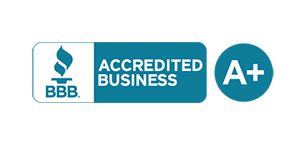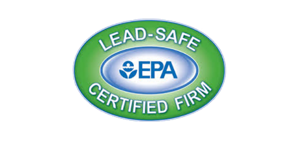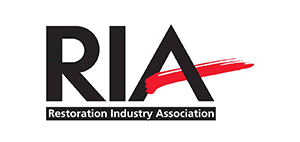Welcome to our comprehensive guide on the different types of water damage that homeowners may encounter. Water damage can be a serious issue for any homeowner, leading to structural damage, mold growth, and costly repairs. By understanding the various types of water damage and their causes, you can take proactive steps to prevent and address water-related issues in your home.
Water damage can occur in various forms and from different sources. Whether it’s a small plumbing leak or a major basement flood, each type requires prompt attention and suitable remedies to prevent further damage to your property. In this article, we will explain the common types of water damage that homeowners may face and provide actionable tips for prevention and mitigation.
Key Takeaways:
- Understanding the types of water damage helps homeowners identify and address issues effectively.
- Plumbing leaks, roof leaks, basement flooding, appliance malfunctions, and natural disasters are common causes of water damage.
- Prompt detection and action can minimize the risk of extensive damage and costly repairs.
- Regular maintenance, early detection, and swift repairs are essential for protecting your home from water damage.
- Implementing preventative measures can significantly reduce the impact of water-related issues on your property.
Plumbing Leaks
Plumbing leaks can cause significant water damage within your home. Whether it’s a burst pipe, a leaking faucet, or a faulty plumbing fixture, these issues can lead to water intrusion and damage to your walls, floors, and other structures. Detecting and fixing plumbing leaks promptly is crucial to prevent further water damage and ensure the integrity of your property.
One of the key signs of plumbing leaks is an unexplained increase in your water bill. If you notice a sudden spike in your water usage or receive an unexpectedly high bill, it may indicate that you have hidden leaks in your plumbing system. Additionally, damp spots or water stains on your walls, ceilings, or floors can also be warning signs of plumbing leaks.
When dealing with plumbing leaks, it’s essential to take immediate action to minimize the potential damage. Here’s what you can do:
- Turn off the water supply: If you suspect a burst pipe or major leak, locate your main water valve and shut off the water supply to your home. This will help prevent further water damage until the issue is resolved.
- Contact a professional plumber: Plumbing leaks often require the expertise of a professional plumber. They have the knowledge and tools to identify the source of the leak and provide the necessary repairs.
- Inspect and repair faulty fixtures: Leaking faucets and other plumbing fixtures should be inspected and repaired promptly. In many cases, replacing worn-out gaskets or seals can solve the problem and prevent further leakage.
- Address burst pipes: If you experience a burst pipe, it’s crucial to contact a plumber immediately to prevent extensive water damage. They will assess the situation, repair the burst pipe, and help restore your plumbing system.
By addressing plumbing leaks promptly, you can mitigate the risk of water damage and protect the structural integrity of your home. Regular maintenance, such as inspecting pipes and fixtures for signs of leaks, can also help prevent future plumbing issues and potential water damage.
Next, we will explore another common cause of water damage in homes: roof leaks. Understanding the risks associated with roof leaks and how to prevent them is crucial for homeowners.
Roof Leaks
Roof leaks can cause significant water damage to your home if left unaddressed. It is crucial to understand the common causes of roof leaks and take immediate action to prevent further damage.
The main culprit for roof leaks is often damaged roof shingles. Over time, shingles can become worn, cracked, or displaced, allowing water to seep through the roof and into your home. Additionally, flashing issues can create gaps where water can infiltrate, leading to leaks.
Clogged gutters can also contribute to roof leaks. When gutters are blocked with debris, water can overflow and seep under the roof, causing damage to the underlying structure.
Identifying roof leaks early is essential to mitigate water damage. Look out for telltale signs such as water stains on ceilings or walls, peeling paint, or the presence of mold and mildew. If you notice these signs, it’s crucial to take prompt action.
To prevent further damage from roof leaks, consider the following steps:
- Inspect your roof regularly for any signs of damage, such as missing or damaged shingles. Address these issues promptly.
- Clean your gutters regularly to prevent clogs and ensure proper water drainage.
- Ensure proper installation and maintenance of roof flashing to prevent water intrusion.
- Consider hiring a professional roofer to conduct a comprehensive roof inspection and address any underlying issues.
- In severe cases, you may need to consider roof replacement to prevent future leaks and water damage.
By staying vigilant and taking proactive measures, you can protect your home from the detrimental effects of roof leaks and water damage.
Basement Flooding
Basement flooding can be a homeowner’s worst nightmare. It can cause extensive water damage, lead to foundation issues, and even result in sump pump failure. Understanding the potential risks associated with basement flooding is essential for effectively preventing and mitigating water damage in your home.
Heavy rain is one of the primary causes of basement flooding. When rainwater accumulates around your home’s foundation, it can seep into the basement through cracks, gaps, or improperly sealed windows and doors. Additionally, if your property has inadequate drainage systems in place, water can easily find its way into the basement.
Another common cause of basement flooding is foundation problems. Over time, a house’s foundation can develop cracks or become weakened, allowing water to infiltrate the basement. It’s crucial to regularly inspect your foundation for any signs of damage and address them promptly to prevent water damage.
In some cases, sump pump failure can also contribute to basement flooding. A sump pump is designed to prevent water buildup in the basement by pumping out excess water. However, if the pump malfunctions or loses power during heavy rain, water can start to accumulate, leading to flooding.
To protect your basement from flooding and prevent water damage, there are several measures you can take:
- Ensure proper grading around your home’s foundation to redirect water away from the basement.
- Clear gutters and downspouts regularly to allow rainwater to flow away from the foundation.
- Seal any cracks or gaps in the foundation walls, windows, and doors to prevent water infiltration.
- Install a backup power source for your sump pump to ensure it continues to operate during power outages.
- Consider installing a basement waterproofing system, including interior and exterior drainage systems, to effectively manage water intrusion.
By taking these preventive measures and addressing any potential issues promptly, you can significantly reduce the risk of basement flooding and the associated water damage in your home.
Appliance Malfunctions
Appliances like dishwashers and washing machines are convenient additions to any home. However, they can sometimes malfunction and lead to water damage if not properly maintained or promptly addressed. Understanding the common causes of appliance-related water damage and taking preventive measures can help you minimize the risk of potential damage to your home.
Dishwasher leaks: Dishwashers can develop leaks due to various reasons, such as damaged door seals, clogged drain pipes, or faulty water inlet valves. These leaks can result in water seeping onto your kitchen floor or damaging adjacent cabinets and appliances.
Washing machine overflow: Overflows can occur when washing machines experience issues with the water supply, drainage system, or internal mechanisms. Sudden surges of water can flood your laundry area, seep into walls, and potentially damage flooring and nearby structures.
Regular maintenance and early detection are crucial in preventing appliance malfunctions and subsequent water damage. Here are some tips to keep in mind:
- Inspect and replace worn-out seals and gaskets on your dishwasher to prevent leaks.
- Ensure that dishwasher drain pipes are clear from debris and not prone to clogging.
- Regularly clean the inlet valves and hoses of your washing machine to prevent blockages and ensure proper water flow.
- Consider installing an automatic shut-off valve for your washing machine to prevent overflows.
- Keep an eye out for signs of appliance malfunctions, such as unusual noises, water accumulation, or error codes, and address them promptly.
By taking these proactive steps, you can minimize the risk of appliance malfunctions leading to water damage in your home. Remember, prevention is key when it comes to protecting your property from harm.
Natural Disasters
Natural disasters, such as floods, hurricanes, and severe storms, pose significant threats to homes and can result in extensive water damage. When these catastrophic events strike, it is essential to be prepared and take necessary precautions to safeguard your property and minimize the potential impact.
One of the most important steps in protecting your home from natural disasters is to have a comprehensive disaster preparedness plan in place. This plan should include measures to prevent water damage, such as securing windows and doors, reinforcing vulnerable areas, and clearing gutters and drains to ensure proper water flow. Additionally, consider investing in flood insurance to provide financial protection in case of a flood.
It is crucial to stay informed about local weather alerts and evacuation orders during severe weather events. Follow the guidance of local authorities, and if necessary, evacuate your property to ensure your safety and reduce the risk of water damage. Once the danger has passed, evaluate your home for any signs of water damage, such as standing water, wet walls, or damaged ceilings, and take immediate action to mitigate further damage.
After a natural disaster, it is essential to contact your insurance company to report any water damage and start the claims process. Document the damage with photographs and keep records of any repairs or expenses incurred. Engage professional restoration services to assess and restore your home to its pre-disaster condition.
Key Points:
- Prepare a comprehensive disaster preparedness plan to prevent water damage.
- Stay informed about local weather alerts and evacuation orders.
- Secure your property and evacuate if necessary.
- Assess and document water damage after the disaster.
- Contact your insurance company and engage professional restoration services.
Conclusion
Water damage can have a significant impact on homeowners and their properties. To protect your home, it is essential to understand the different types of water damage and take appropriate preventative measures. Regular maintenance, early detection, and prompt repairs are key to mitigating the impact of water damage.
By being proactive, you can minimize the risk of water-related issues turning into costly problems. Inspect your plumbing system regularly for leaks and ensure that any repairs are carried out promptly. Keep an eye on your roof for signs of damage, such as missing or damaged shingles, and address them immediately to prevent water infiltration.
Basements are particularly susceptible to flooding, so make sure your foundation is in good condition and consider installing a sump pump to help prevent water accumulation. Additionally, take precautions with your appliances, such as regularly checking for leaks and ensuring proper maintenance.
Overall, being vigilant and proactive is key to protecting your home from water damage. Remember, prevention is always better than dealing with the consequences of water damage. By implementing these preventative measures and taking swift action when necessary, you can safeguard your property and enjoy peace of mind as a homeowner.
FAQ
What are the different types of water damage that can affect homes?
The different types of water damage that can affect homes include plumbing leaks, roof leaks, basement flooding, appliance malfunctions, and damage caused by natural disasters.
How can I detect and fix plumbing leaks?
To detect plumbing leaks, look for signs such as water stains, mold or mildew growth, and an increase in water bills. To fix plumbing leaks, it’s best to hire a professional plumber who can identify and repair the issue.
What are the common causes of roof leaks?
Roof leaks can be caused by damaged roof shingles, flashing issues, clogged gutters, or improper installation. Regular roof inspections and maintenance can help identify and address potential causes of roof leaks.
How can I prevent basement flooding?
To prevent basement flooding, ensure proper drainage around the foundation, install a sump pump with a backup system, and seal any cracks or gaps in the basement walls. Regular maintenance of your basement’s drainage system is also important.
What should I do if an appliance malfunctions and causes water damage?
If an appliance malfunctions and causes water damage, turn off the water supply to the appliance, unplug it, and contact a professional repair service. It’s also important to regularly inspect and maintain your appliances to minimize the risk of malfunctions.
How can I prepare for natural disasters to minimize water damage?
To prepare for natural disasters, ensure your home is properly insured, create an emergency plan, and secure important documents. Install preventive measures like flood barriers and storm shutters, and monitor weather alerts to take necessary precautions.
How can homeowners protect their properties from extensive water damage?
Homeowners can protect their properties from extensive water damage by implementing regular maintenance routines, promptly addressing any water-related issues, and taking preventive measures like installing leak detectors or waterproofing systems. Professional inspections can also help identify potential risks.





















